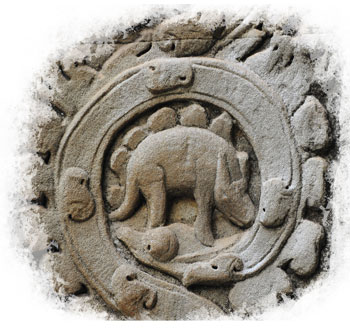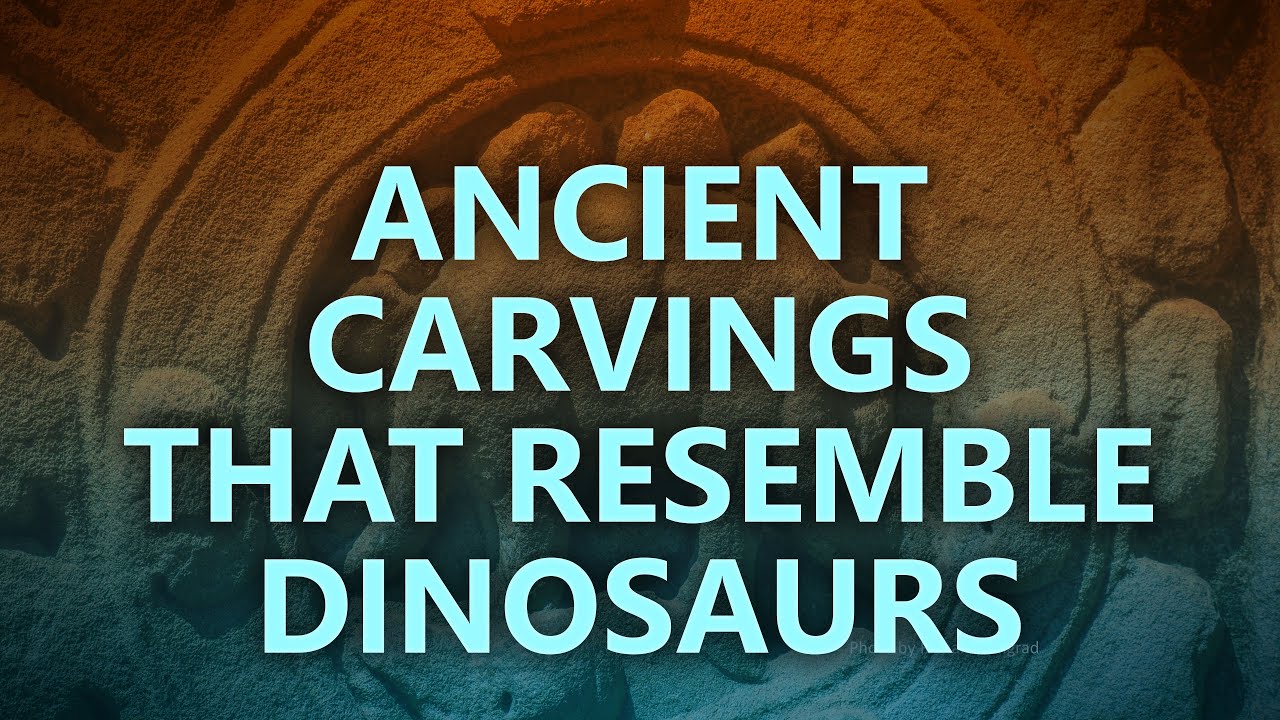Did Angkor really see a dinosaur?

The September 2007 Creation magazine back page feature article ‘Angkor saw a Stegosaur?’ showed a stone carving on the temple of Ta Prohm, Angkor complex, Cambodia, (circa AD 1200), depicting what looks like an artistic impression of a stegosaurian-type dinosaur.1 As such evidence clearly supports the biblical view of dinosaurs, it naturally provoked the ire of vocal atheists. Here are their objections:
“If it is a dinosaur, they carved it from fossils”
One objection is that the temple carvers may have carved the stegosaur from nearby fossils. However, it takes a lot of training and skill to accurately reconstruct from fossils what a dinosaur looked like.2 There is no evidence that such was available in Cambodian culture of the time. As one dinosaur researcher has noted, if there are reasonably accurate dinosaur depictions that pre-date modern advances in the science of fossil reconstruction, “then a tremendously powerful case can be made that dinosaurs were being depicted not from the bones, but from real-life encounters.”3
Moreover, no stegosaurian fossils have ever been reported in Cambodia. Therefore fossils are unlikely to have been the basis for the carving on the temple.
“The ‘stegosaurian plates’ are merely background decorations”

Some objectors have pointed out that the water buffalo image immediately above the stegosaur on the temple wall has a decorative design carved above the animal. They therefore said that the supposed ‘plates’ along the back of the stegosaur are merely decorative background symbols also. The carving is thus some other kind of everyday animal standing in front of a flower symbol, or some other unknown ‘leafy’ ornamentation.
However, the plates along the back of the animal are unlike all the other decorative designs in the temple walls. The plates are also seen to hug the line of the back, and follow its curve exactly. The shape of the plates is quite similar to that of known fossil stegosaur plates. Furthermore, the creature’s plates have a noticeably higher relief than the background ornamentation seen immediately above the water buffalo.
“It doesn’t look much like a stegosaur!”

Some objectors thought that the carving does not represent the known shape, or look, of typical stegosaurs. However, when a photograph is shown to audiences worldwide, upon being asked what they think it is, the near-universal response is “Stegosaurus”, with no other creature proposed to date in the experience of CMI speakers. Note, too, that the artist was most likely making only an approximate representation of what he or she had seen. I.e. it is a representation of a stylized, artistic impression of a living stegosaurian dino, rather than a ‘scientific’ one. We often see such ‘artistic licence’ in non-scientific artworks of all cultures, which nonetheless clearly show the main identifying characteristics of a creature (e.g. the tusks of an elephant). A writer commenting on one website, who identified himself as a native Cambodian, and who felt that the carving did indeed depict a stegosaur, wrote: “If you illustrate it scientifically, how can it be art? What about the theme of the wall?”
Nevertheless, the carver has taken the care to portray the stegosaur as standing up on the tips of its toes, as seen in the front leg. According to paleontologists this is actually how stegosaurs walked and stood, not with splayed-out toes as often seen in museum displays.
“It’s just an imaginary creature”
Some people thought that the carving is an imagined creature: it does not represent any real animal at all, like some of the other carvings at Ta Prohm temple. The artist supposedly imagined some fantastic creature that happened to look like a dinosaur. Of course, the problem with this is that the depiction is so easily recognizable as being dinosaurian, specifically stegosaurian. Moreover, most of the carvings depict real, everyday animals that must have been known to the artists who carved the images.
Conclusion
The simplest explanation is that the carving at Ta Prohm is a stylized representation of a dinosaur of the Stegosauridae family. In other words it is an artist’s version of what the creature looked like, not a scientist’s version. However, the main elements for a stegosaurian dinosaur are clearly depicted: namely the strongly arched back and dinosaurian body, and, crucially, the plates along the back of the animal. No other creature known, fossil or living, has a row of such characteristic plates along its back.
Some have pointed to the carved image apparently lacking tail spines as being a problem, but there is known variation in size and number of tail spikes in Stegosauridae. And while the head is different to the typical stegosaurian reconstructions from fossils, the fact that the creature does not exactly match a modern reconstruction shows that it is not a modern forgery. Possibly it is a type of stegosaurid that has not yet been discovered by paleontologists in the fossil record.
This carving adds to the growing evidence of man having lived alongside dinosaurs in the past, right in line with what the Bible would indicate.4
References and notes
- Catchpoole, D., Angkor saw a Stegosaur? Creation 29(4):56, 2007; creation.com/angkor-saw-a-stegosaur. Return to text.
- Bell, P., Bishop Bell’s brass behemoths! Creation 25(4):40–44, 2003; creation.com/bishop-bells-brass-behemoths. Return to text.
- Nelson, V., Untold secrets of planet Earth: Dire Dragons, Untold Secrets of Planet Earth Publishing Company, Inc., www.UntoldSecretsofPlanetEarth.com, 2012, p. 19. Return to text.
- I.e. all creatures made during Creation Week, with some subsequently becoming extinct following the Fall/Curse. Return to text.









Readers’ comments
Comments are automatically closed 14 days after publication.